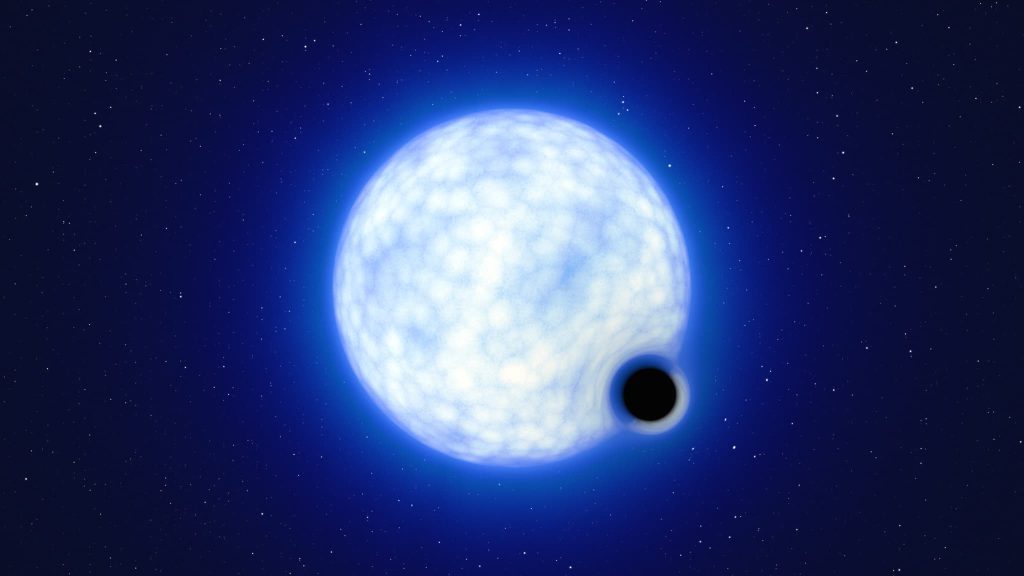
The first dormant black hole has been discovered outside our galaxy
This new type of black hole has been detected after six years of observation with the European Southern Observatory’s (ESO) Very Large Telescope (VLT) in Chile.
Black hole organisms grow with the first discovery of a stellar-mass dormant black hole orbiting another star, still far enough away not to swallow its mate.
This new type of black hole, which has long been predicted by theory but is very difficult to detect because it is so well hidden, has been detected after six years of observation with the Very Large Telescope (VLT) of the European Southern Observatory (ESO) in Chile, according to a study Posted on Monday in natural astronomy.
“We found a needle in a haystack,” lead author Tomer Schnarer said in a statement. For three years, several candidates for the title of “sleeping black hole” have submitted themselves, but so far none of them has been accepted by this international team of astronomers, accredited by the ESO “black hole police”.
A huge star at the end of his life
The lucky winner, whose mass is twelve times that of the Sun, lurks in the Magellanic Cloud, a dwarf galaxy near the Milky Way. It’s like the second leg of a binary system of two stars orbiting around it, one of which, dead, has become a black hole and the other is still alive.
Stellar-mass black holes – immeasurably smaller than their big, super-massive siblings – are massive stars (between 5 and 50 times the mass of the Sun) at the end of their lives, collapsing in on themselves.
These objects are so dense and their gravitational force is so strong that not even light can escape: they are thus invisible by definition. However, scientists can observe the material orbiting around it, before swallowing it there … except when the black hole “sleeps”, when on a diet.
25 times the mass of the sun
In binary systems already observed, a star that has become a black hole is close enough to its companion star to “steal” its matter from it (we’re talking about “accumulation”), explains Hughes Sana of the University of Leuven (KU Leuven). , in Belgium, one of the study authors.
This substance, once captured, emits x-rays, which can be detected. But here, the black hole does not emit anything, and for good reason: “A living star (about 25 times the mass of the Sun) is far enough away to not be eaten. Until the moment it remains in equilibrium in this orbit” lasts 14 days, continues the astronomer.
A scale doesn’t last, he says. “A living star will grow, and at this time, the black hole will swallow part of its surface,” which will then emit X-rays, thereby exiting its rest state.
But how do you know that such a thing exists? “Imagine two dancers holding hands, you notice them in the dark. One in black, the other in luminous costume: You only see the second dance, but you know he has a dance partner, thanks to a movement study,” Hughes-Sana explains.
Only dozens of black holes have been discovered so far
In astronomy, just as Jupiter and the Sun orbit each other, we can measure the masses of a binary system by observing these motions.
To confirm that the ghostly object is indeed a black hole, the researchers proceeded with removal, ruling out several scenarios such as the star losing its envelope.
“The only reasonable explanation is that it is a black hole, because no other star can reproduce this observational data,” summarizes the researcher.
According to recent models, about 2% of the massive stars in our galaxy likely have a black hole around them, or about 100 million, according to Hugues Sana. “Currently, we only know ten of them, they were all detected thanks to their X-ray emissions, so we are missing some of them!”

“Incurable web evangelist. Hipster-friendly gamer. Award-winning entrepreneur. Falls down a lot.”
